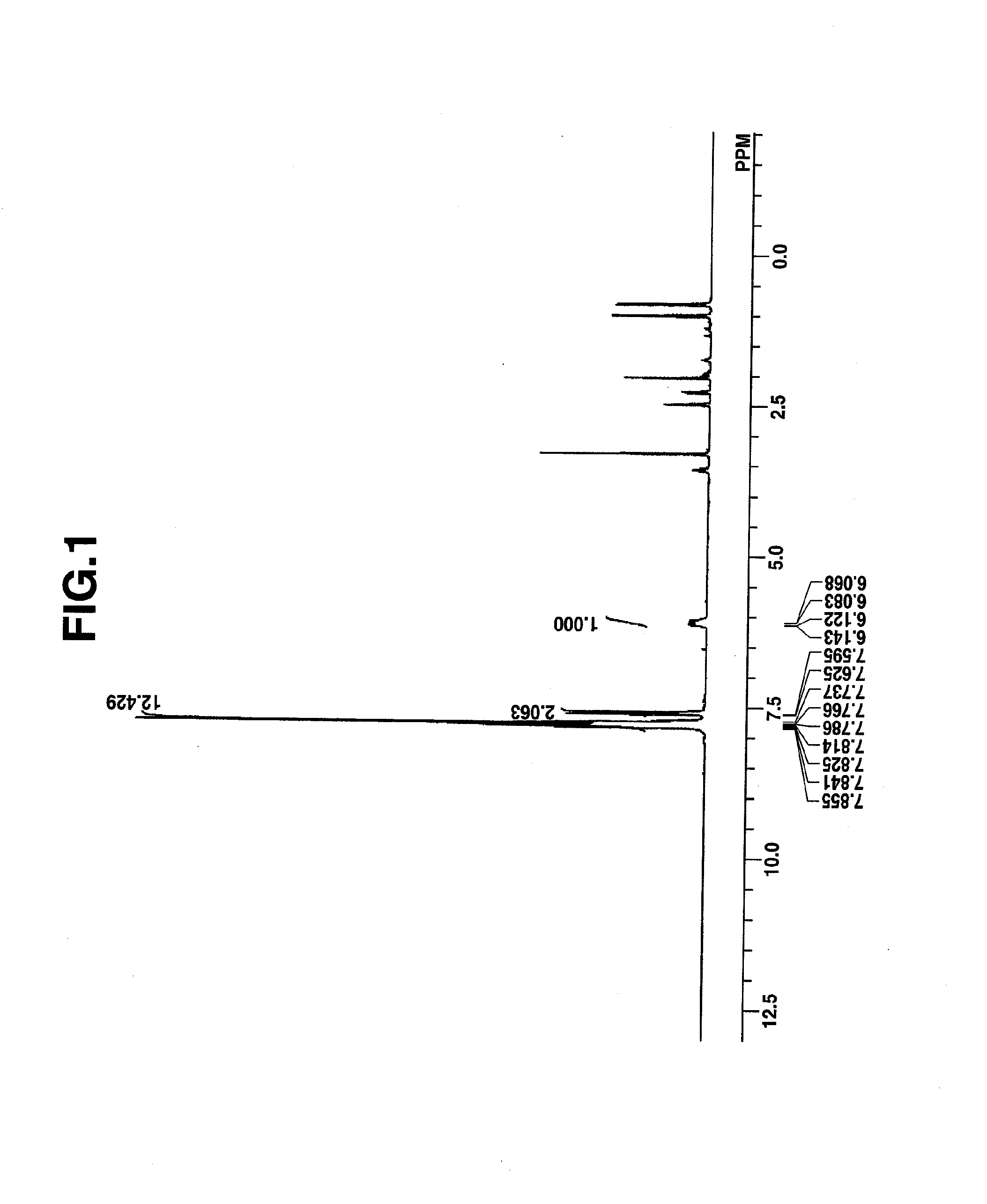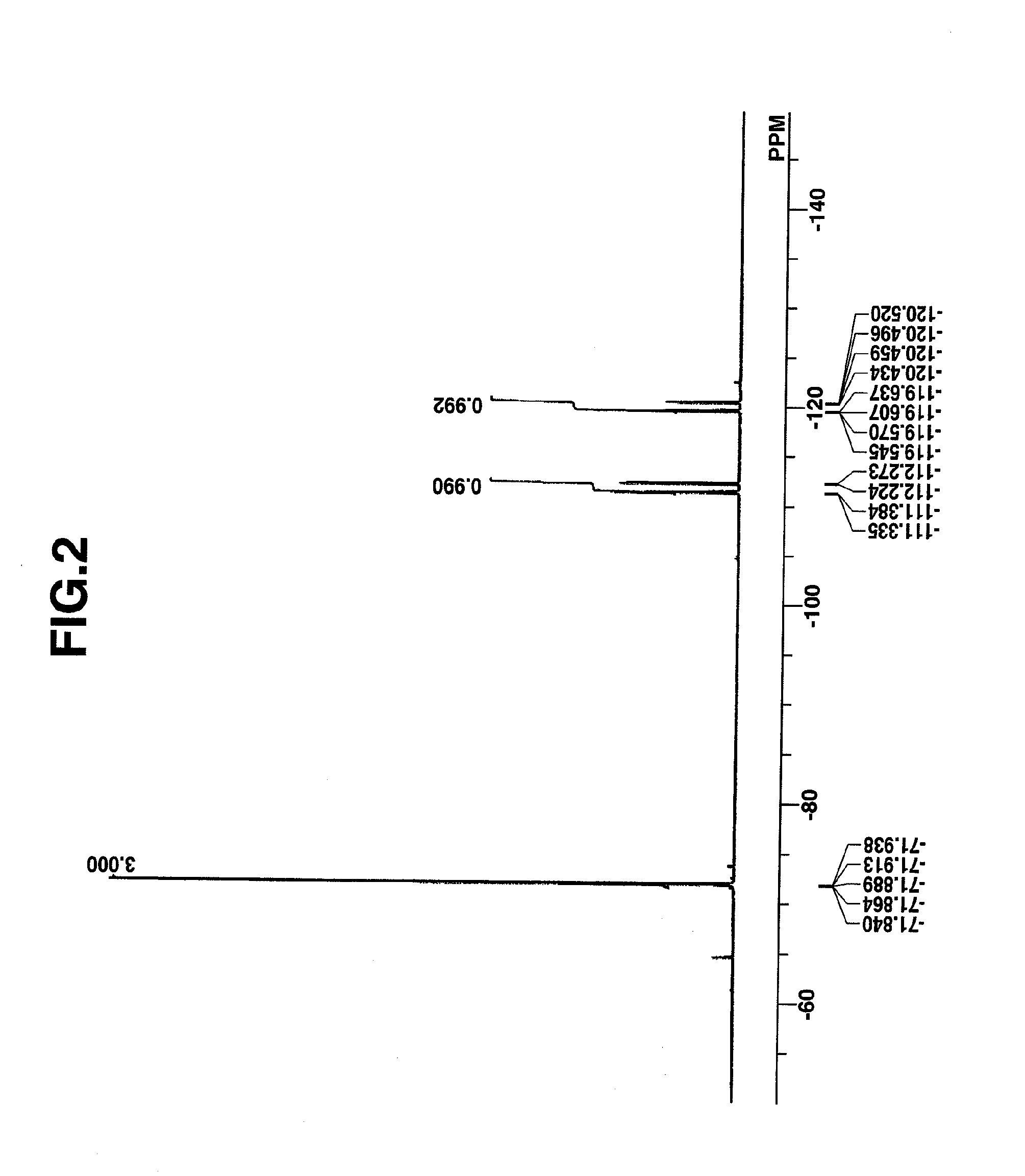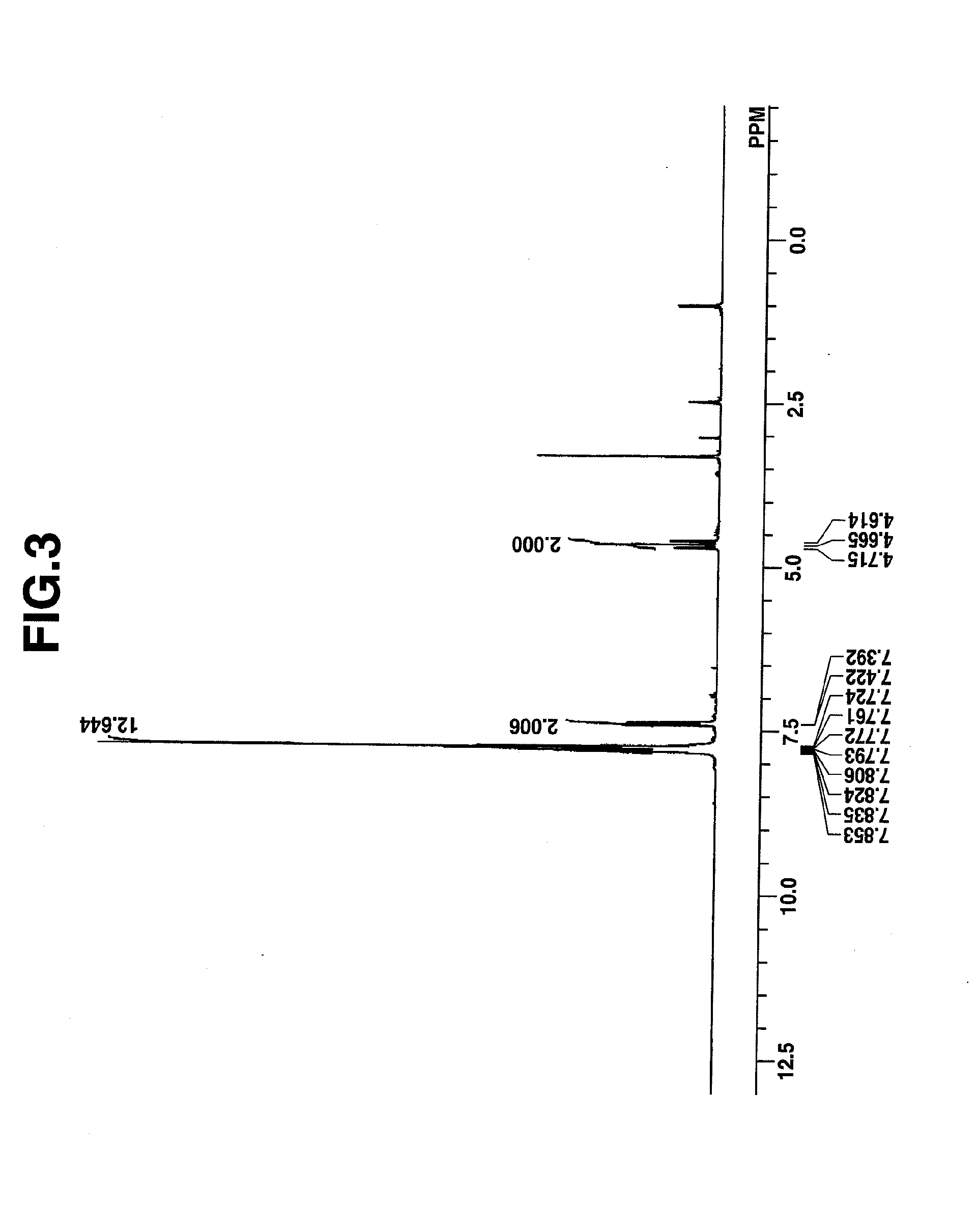Sulfonium salt, resist composition, and patterning process
- Summary
- Abstract
- Description
- Claims
- Application Information
AI Technical Summary
Benefits of technology
Problems solved by technology
Method used
Image
Examples
synthesis example 1
Synthesis of 4-fluorophenyldiphenylsulfonium chloride
[0144]Diphenyl sulfoxide, 40 g (0.2 mole), was dissolved in 400 g of dichloromethane, which was stirred under ice cooling. At a temperature below 20° C., 65 g (0.6 mole) of trimethylsilyl chloride was added dropwise to the solution, which was allowed to mature for 30 minutes at the temperature.
[0145]Then, a Grignard reagent which had been prepared from 14.6 g (0.6 mole) of metallic magnesium, 78.3 g (0.6 mole) of 4-fluorochlorobenzene and 180 g of tetrahydrofuran (THF) was added dropwise at a temperature below 20° C. The reaction solution was allowed to mature for one hour, after which 50 g of water at a temperature below 20° C. was added to quench the reaction. To this solution, 150 g of water, 10 g of 12N hydrochloric acid, and 200 g of diethyl ether were further added. The water layer was separated and washed with 100 g of diethyl ether, yielding an aqueous solution of 4-fluorophenyldiphenylsulfonium chloride. The compound in a...
synthesis example 2
Synthesis of sodium 1,1,3,3,3-pentafluoro-2-hydroxy-propanesulfonate
[0146]Ester hydrolysis reaction was effected using sodium 1,1,3,3,3-pentafluoro-2-(pivaloyloxy)propanesulfonate, which was prepared according to the formulation described in JP-A 2007-145797, and a sodium hydroxide aqueous solution in methanol. After the completion of reaction, hydrochloric acid was added to turn the reaction system from neutral to weakly acidic. The aqueous solution was directly used in the subsequent reaction.
synthesis example 3
Synthesis of 4-fluorophenyldiphenylsulfonium 1,1,3,3,3-pentafluoro-2-hydroxypropanesulfonate
[0147]An amount (0.2 mole) of the 4-fluorophenyldiphenyl-sulfonium chloride aqueous solution in Synthesis Example 1 was combined with an amount (0.2 mole) of the sodium 1,1,3,3,3-pentafluoro-2-hydroxypropanesulfonate aqueous solution in Synthesis Example 2, followed by twice extraction with 500 g of dichloromethane. Through the steps of washing the organic layer with water, distilling off the solvent in vacuum, adding isopropyl ether for crystallization, filtration and drying, the target compound was obtained. White crystals, 71.5 g, yield 70% (based on diphenyl sulfoxide).
PUM
| Property | Measurement | Unit |
|---|---|---|
| Nanoscale particle size | aaaaa | aaaaa |
| Fraction | aaaaa | aaaaa |
| Length | aaaaa | aaaaa |
Abstract
Description
Claims
Application Information
 Login to View More
Login to View More - R&D
- Intellectual Property
- Life Sciences
- Materials
- Tech Scout
- Unparalleled Data Quality
- Higher Quality Content
- 60% Fewer Hallucinations
Browse by: Latest US Patents, China's latest patents, Technical Efficacy Thesaurus, Application Domain, Technology Topic, Popular Technical Reports.
© 2025 PatSnap. All rights reserved.Legal|Privacy policy|Modern Slavery Act Transparency Statement|Sitemap|About US| Contact US: help@patsnap.com



